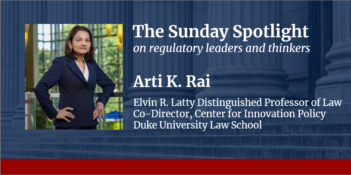
Improving the patent system depends on reducing processing snarls.
Patent quality has been at the heart of debate on how best to fix our “broken” patent system. Many believe that the U.S. Patent and Trademark Office is issuing too many invalid patents that unnecessarily drain consumer welfare, stunt productive research, and unreasonably extract rents from innovators.
Responding to these concerns, the Patent Office recently held a “Patent Quality Summit,” at which policymakers, practitioners, and academics gathered to discuss how to decrease the number of invalid patents. The summit dialogue revolved around several commendable Patent Office proposals for improving patent quality, but ultimately it failed to probe one of the key underlying factors contributing to invalid patents: the backlog of patent applications.
One proposal featured at the summit centered on proactive alternatives to the use of repeat filings by aggrieved patent applicants—even ways to reduce the use of repeat filings altogether. The Patent Office specifically sought input from the public on how to modify the patent review process to use such alternatives.
Repeat filings are an oddity of the United States patent system. Unlike its foreign counterparts, the U.S. Patent Office can never reject a patent application with finality because applicants facing rejection can always restart the examination process by filing a repeat application. The Patent Office has reasoned that if it can find ways to increase the quality of communication between applicant and examiner during application review, and thus focus examination on the resolution of patentability issues by providing proactive alternatives to repeat filings, repeat filings can diminish and the quality of the patents that issue will increase.
We agree with the Patent Office that decreasing repeat filings would likely result in an increase in patent quality—but not for the rather cryptic reasons stated by the Office. The reason instead stems from the incentives created for the Patent Office by repeat filings—and the massive application backlogs that can arise from repeat filings.
To begin with, it’s important to realize that repeat filings can potentially overwhelm the existing examination infrastructure. The inability of the Patent Office to rid itself of an application may severely inhibit its ability to provide timely review of applications, one of the Office’s primary missions. The fact that the Patent Office currently faces a backlog of over 600,000 patent applications, of which close to 40% constitute repeat filings, suggests this has already occurred.
A Patent Office that is concerned about its backlog of applications could attempt to decrease, or at least slow the growth of, its backlog by diminishing the incentives of applicants to file repeat applications in the first instance. This is essentially what the Patent Office sought input about during the Patent Quality Summit: How can the Office encourage applicants to seek alternatives to filing repeat applications?
One way the Patent Office can achieve this outcome is through its granting practices. By allowing additional patents early on in the examination process, the Patent Office extinguishes patent applicants’ incentive to refile. A Patent Office that faces binding resource constraints—that is, an inability to meet expected examination demand through available resources—may be tempted to take advantage of this incentive to decrease or at least slow the growth of application backlogs.
Our previous work found evidence suggesting that the Patent Office does indeed act on this incentive and over-grants patents during times when it lacks sufficient resources to meet its expected demand of examination. More specifically, our findings have suggested that the Patent Office has preferentially granted those patents it stands to benefit the most from—namely, those in high-repeat-filing-rate technologies, such as information and communication technologies, which includes software, business methods, and information storage, as well as health-related technologies, which includes surgical and medical instruments and genetics. To the extent this desire to grant additional patents arises from an effort to diminish the Patent Office’s growing backlog—and not from the validity or merits of the underlying applications—our analysis demonstrates that the backlog itself (and the repeat filings driving the backlog) may be a key explanation behind the deterioration in patent quality facing the Patent Office.
We commend the Office for holding a Patent Quality Summit and for attempting to improve patent quality through direct and ongoing engagement with the public. We nevertheless remain skeptical that patent quality will be sufficiently improved without acknowledging how the Office’s backlog of applications is intimately related to the issuance of low-quality patents. A more robust discussion of the incentives that repeat filings create for a resource-constrained Patent Office would better enable policymakers to find a solution to the patent quality crisis.
This essay draws on the authors’ recent paper: Does the U.S. Patent and Trademark Office Grant Too Many Bad Patents?: Evidence from a Quasi-Experiment, in the Stanford Law Review.





